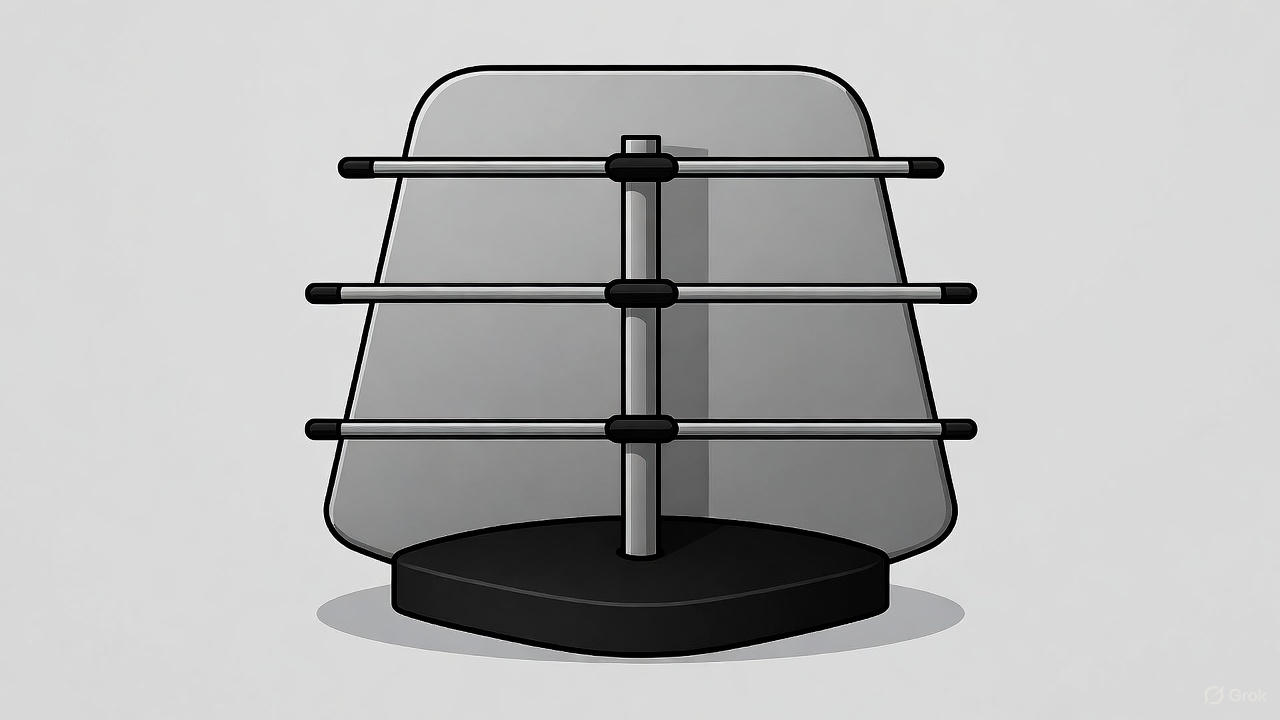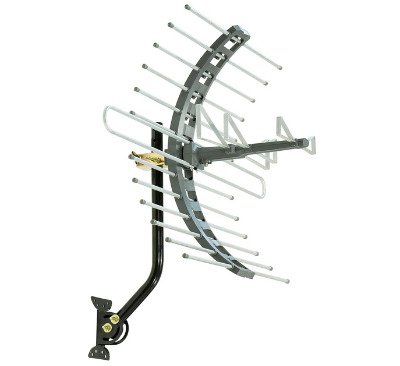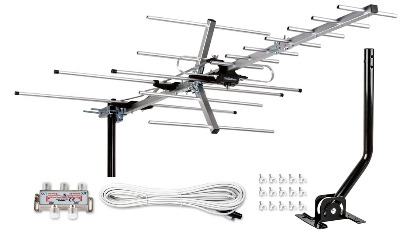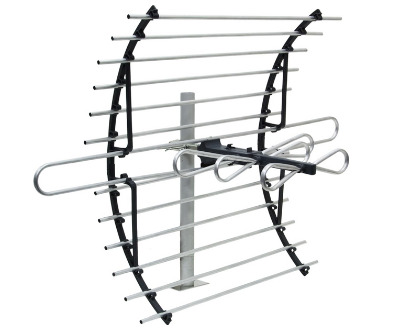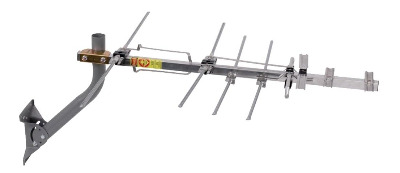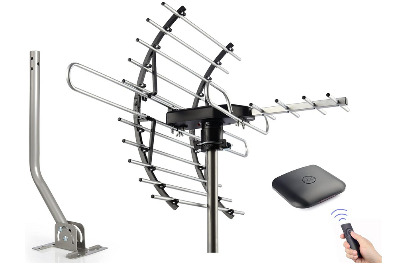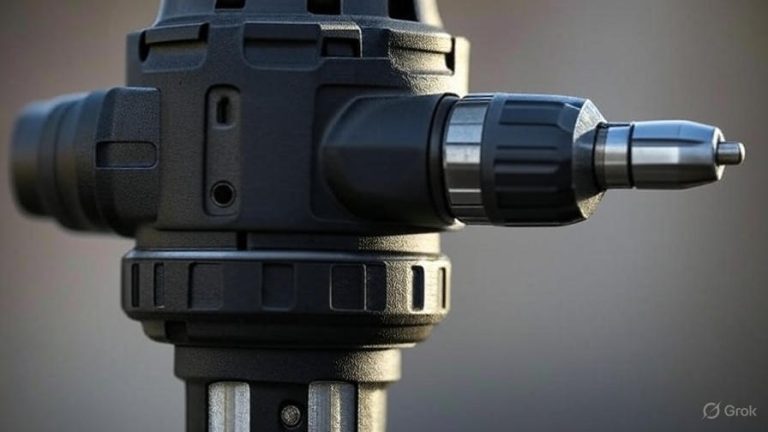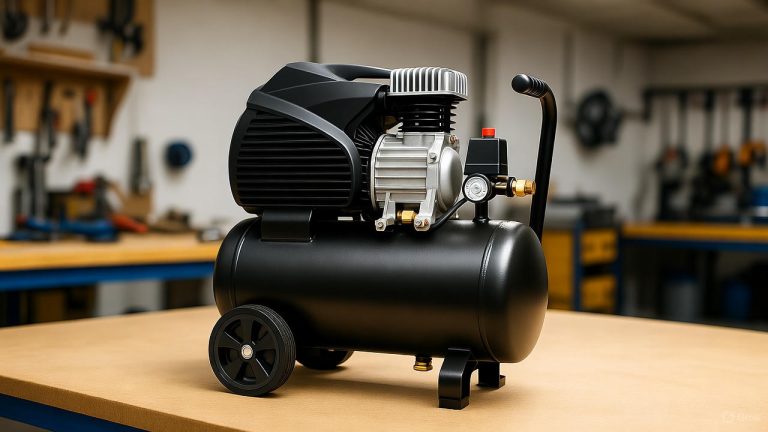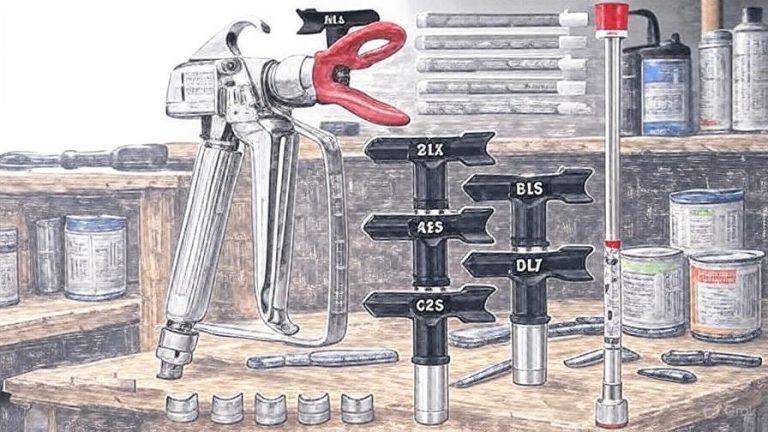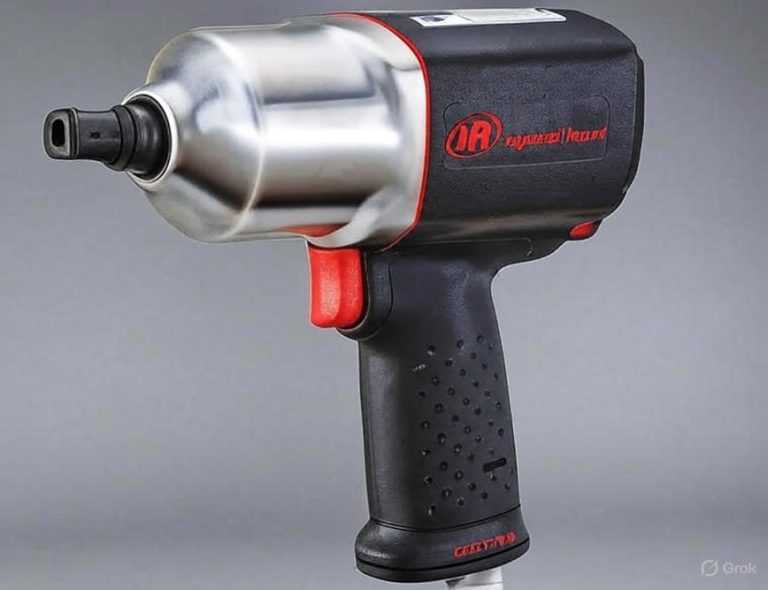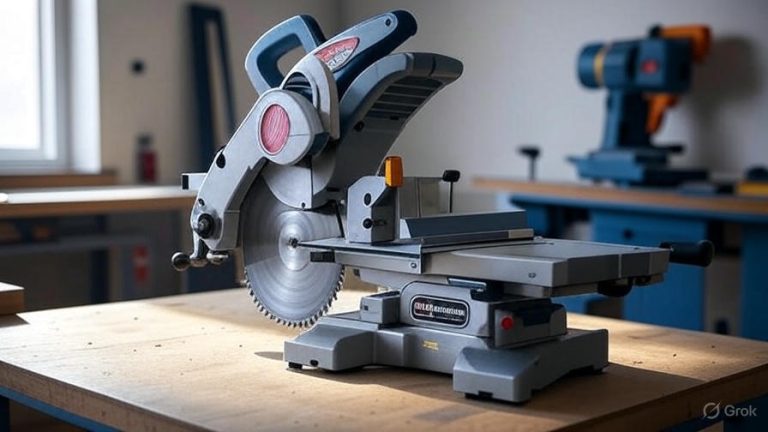5 Best Attic TV Antenna In 2025
Cutting the cord has become increasingly popular as viewers seek freedom from expensive cable subscriptions. An attic TV antenna offers the perfect solution for accessing free over-the-air broadcasts without compromising your home’s exterior appearance. Installing an antenna in your attic provides protection from harsh weather conditions while delivering crystal-clear HD channels.
Finding the right attic-mounted antenna can transform your viewing experience. These devices capture broadcast signals from local television stations, giving you access to major networks like ABC, NBC, CBS, FOX, and PBS completely free. The technology behind modern antennas has evolved significantly, now supporting 4K resolution and multiple television connections throughout your home.
This comprehensive review examines five top-performing attic TV antennas currently available. Each model brings unique features designed to maximize signal reception while fitting different installation requirements and budget considerations. From compact designs to long-range powerhouses, these antennas represent the best options for cord-cutters seeking reliable free television.
Why Install an Antenna in Your Attic?
Attic installation offers several compelling advantages over outdoor mounting. Your antenna stays protected from rain, snow, ice, and wind damage that typically affects rooftop installations. This protection extends the lifespan of your equipment while reducing maintenance needs.
The hidden placement keeps your home’s curb appeal intact. Neighborhood associations and homeowner communities often restrict visible outdoor antennas, making attic installation the only viable option. You can capture broadcast signals without any visible equipment on your roof or exterior walls.
Attic antennas are easier to install than rooftop models. You avoid the dangers of climbing ladders and working at heights. The controlled environment also simplifies cable routing into your living spaces. Many homeowners complete the installation themselves in just a few hours.
Signal quality through most attic materials remains excellent. Wood framing and asphalt shingles cause minimal signal loss. However, homes with metal roofing, radiant barriers, or brick construction may experience reduced reception. Testing your specific location helps determine the best placement for optimal results.
Understanding Signal Range and Reception
Television broadcast signals travel through the air using VHF (Very High Frequency) and UHF (Ultra High Frequency) bands. VHF signals operate on channels 2-13, while UHF covers channels 14-36. Modern digital broadcasts primarily use UHF frequencies, though some stations still transmit on VHF.
Range specifications on antenna packaging indicate maximum distance under ideal conditions. Real-world performance depends on multiple factors including terrain, obstructions, transmitter power, and your home’s construction materials. A 200-mile range antenna might only receive stations 50 miles away if hills or buildings block the signal path.
Your distance from broadcast towers significantly impacts reception quality. Homes within 30 miles of towers typically achieve excellent results with most attic antennas. Locations between 30-50 miles may require amplified models or directional antennas. Beyond 50 miles, you’ll need high-gain directional antennas pointed toward transmission towers.
Online tools help identify available channels at your location. Websites like AntennaWeb and the FCC’s DTV Reception Maps show broadcast tower locations and expected signal strength. These resources guide your antenna selection based on actual transmission distances rather than marketing claims.
Key Features to Consider
Amplification boosts weak signals but isn’t always necessary. Built-in or external amplifiers help homes far from broadcast towers or those with signal obstacles. However, amplifiers can overload receivers in areas with strong signals, causing pixelation or channel loss. Some models include adjustable gain controls for fine-tuning performance.
Multi-directional antennas receive signals from various directions simultaneously. These omnidirectional models work well when broadcast towers surround your location. Directional antennas focus on signals from one direction, offering better range and signal strength for distant stations. Your tower layout determines which design works best.
Build quality affects long-term performance and durability. Weather-resistant materials protect against moisture damage in attic environments. Metal elements and sturdy construction withstand temperature fluctuations better than plastic components. Quality connectors and cables ensure reliable signal transmission without degradation.
Installation hardware varies between models. Some antennas include mounting brackets, poles, and all necessary hardware. Others require separate purchases of mounting equipment. J-mounts, tripods, and chimney brackets offer different installation options suited to various attic configurations.
Top 5 Attic TV Antennas Reviewed
1. GE Outdoor HD Digital TV Antenna (Model 29884)
The GE 29884 delivers reliable performance in a compact package designed for both attic and outdoor use. This antenna captures VHF and UHF signals effectively, supporting modern 4K and 1080P HD television broadcasts. The unit measures approximately 32 inches, making it easy to position in tight attic spaces.
Product Description
This GE model features a traditional design with multiple elements optimized for digital signal reception. The construction uses weather-resistant materials that withstand attic temperature variations and moisture levels. A J-mount comes included, allowing you to attach the antenna to rafters, walls, or poles without purchasing additional hardware.
The antenna supports both VHF and UHF frequency ranges, ensuring compatibility with all broadcast channels in your area. The passive design requires no power connection, simplifying installation and eliminating ongoing electricity costs. Coaxial cable connects directly to your television or distribution system.
Signal reception quality remains consistent across various distances from broadcast towers. The design balances size constraints with performance needs, making it suitable for suburban and some rural locations. Pre-assembled construction means you can install the antenna immediately without complex setup procedures.
Pros
The included J-mount provides versatile installation options for different attic configurations. You can secure the antenna to wooden beams, metal supports, or mounting poles depending on your space layout. This flexibility helps optimize placement for best signal reception.
Weather-resistant construction protects internal components from moisture and temperature extremes common in attic environments. The materials resist corrosion and degradation over time, ensuring long-term reliability. This durability reduces replacement needs and maintenance costs.
Compact dimensions allow installation in attics with limited space. The 32-inch size fits between rafters and in low-clearance areas where larger antennas won’t work. Despite its smaller footprint, reception performance remains strong for nearby and moderate-distance stations.
No amplifier means the unit never requires power connections or produces signal overload in strong-signal areas. The passive design eliminates potential points of failure associated with electronic components. This simplicity also reduces installation complexity.
4K and 1080P HD support ensures compatibility with modern television standards. You’ll receive the highest quality picture your broadcast stations transmit. The antenna handles future broadcast improvements without requiring upgrades.
Cons
The passive design limits effectiveness for very distant broadcast towers beyond 40-50 miles. Homes in rural areas far from transmitters may need amplified alternatives for reliable reception. Signal strength decreases noticeably at extended ranges.
VHF reception sometimes underperforms compared to dedicated VHF antennas. Stations broadcasting on low-VHF channels (2-6) may appear pixelated or drop out intermittently. This affects fewer stations as most broadcasts now use UHF frequencies.
The antenna cannot connect multiple televisions without an external distribution amplifier. Direct connections work for single-TV setups only. Whole-home installations require additional equipment purchases.
Assembly instructions could provide more detailed guidance for first-time installers. While basic setup is straightforward, optimal positioning advice would help users achieve best results. Some trial and error may be necessary.
Best For
This GE antenna works best for suburban homes within 30-40 miles of broadcast towers. It suits single-television installations where simplicity and reliability matter most. Homeowners seeking a no-frills solution without ongoing power costs will appreciate the passive design.
The compact size makes it ideal for attics with space constraints or low ceilings. If you need basic local channel reception without complicated features, this model delivers consistent performance. It’s an excellent entry-level option for cord-cutting beginners.
2. Five Star Yagi Satellite HD TV Antenna
The Five Star Yagi stands out as a long-range powerhouse capable of reaching broadcast towers up to 200 miles away under optimal conditions. This directional antenna uses a classic Yagi design with multiple elements arranged for maximum signal gain. The kit includes everything needed for professional-quality installation.
Product Description
This antenna measures approximately 6 feet in length, featuring numerous elements that capture and focus signals from distant transmitters. The Yagi design concentrates reception in one direction, providing superior range compared to omnidirectional models. You point the antenna toward your primary broadcast tower location for best results.
The package includes a comprehensive installation kit with mounting pole, brackets, hardware, and detailed instructions. A built-in signal amplifier boosts weak transmissions, helping pull in distant stations that other antennas miss. The amplifier features adjustable gain control for optimizing performance based on your specific location.
Construction uses heavy-duty aluminum elements that resist corrosion and maintain structural integrity in attic environments. The materials handle temperature fluctuations without warping or degrading. Quality components ensure years of reliable service with minimal maintenance needs.
The antenna supports four television connections through the included distribution system. This capability allows you to watch different channels on multiple TVs throughout your home simultaneously. The built-in amplifier provides sufficient signal strength for distribution without quality loss.
Pros
Exceptional range capability reaches broadcast towers 100+ miles away in real-world conditions. The directional design and amplification work together to capture weak signals other antennas cannot detect. Rural homeowners far from cities achieve reliable reception.
Complete installation kit eliminates the need to purchase separate components. The included mounting pole, brackets, and hardware save time and ensure compatibility. You receive everything required for professional installation in one package.
Four-TV support makes this antenna ideal for whole-home setups. The distribution system maintains signal quality across multiple connections. Families can watch different channels simultaneously without interference or quality degradation.
Adjustable amplifier gain lets you optimize performance for your location. You can increase amplification for distant stations or reduce it to prevent overload from nearby towers. This flexibility ensures optimal reception across varying signal conditions.
Heavy-duty construction withstands harsh attic environments. The materials resist rust, corrosion, and temperature-related damage. This durability translates to long-term reliability and fewer replacement needs.
Cons
The 6-foot length requires significant attic space for proper installation. Smaller attics or those with low ceilings may not accommodate this antenna comfortably. Careful measurement before purchase prevents compatibility issues.
Directional design means you must aim the antenna accurately toward broadcast towers. If your stations transmit from multiple directions, you may need a rotor or miss some channels. This limitation affects areas where towers scatter in different locations.
The amplifier requires power connection, adding complexity to installation. You’ll need access to an electrical outlet near the antenna location. Power consumption remains minimal but represents an ongoing operating cost.
Initial setup takes longer than plug-and-play models. Proper positioning, aiming, and amplifier adjustment require patience and possibly multiple attempts. First-time installers might find the process challenging without prior experience.
The price point sits higher than basic antennas. The comprehensive features and superior range justify the cost for those needing maximum performance. Budget-conscious buyers might prefer simpler alternatives.
Best For
Rural homeowners located 50-100+ miles from broadcast towers will benefit most from this antenna’s exceptional range. The directional design works perfectly when all your stations transmit from roughly the same direction. It’s ideal for whole-home installations requiring multiple television connections.
Serious cord-cutters who want maximum channel selection regardless of distance should consider this model. If you’re willing to invest time in proper installation and aiming, the Five Star Yagi delivers professional-grade results. It’s the top choice for challenging reception environments.
3. GE Attic Mount Digital TV Antenna (Model 33692)
The GE 33692 offers a specialized design specifically engineered for attic installation. This compact antenna stays out of sight while providing reliable reception of local broadcasts. The streamlined profile fits attics where traditional outdoor antennas won’t work.
Product Description
This antenna features a low-profile design that mounts flush against attic walls or rafters. The compact construction measures significantly smaller than standard outdoor antennas while maintaining solid VHF and UHF reception. Weather-resistant materials protect against attic moisture and temperature variations.
The unit comes with dedicated attic mounting hardware designed for easy installation on wooden beams. Pre-drilled holes and included screws simplify the mounting process. The coaxial connection point positions conveniently for cable routing into living spaces.
Signal reception covers both VHF and UHF frequencies, ensuring compatibility with all digital broadcast channels. The passive design requires no power connection, keeping installation simple and operating costs zero. The antenna supports 4K and 1080P HD broadcasts for maximum picture quality.
Compact dimensions make this model perfect for attics with limited space or multiple obstructions. You can position it in tight corners or between rafters where larger antennas cannot fit. Despite the small size, performance remains strong for local and regional stations.
Best For
This antenna excels in urban and suburban settings within 30-40 miles of broadcast towers. Homeowners with space-limited attics will appreciate the compact design. If you prioritize invisible installation while maintaining good reception, this model delivers.
The GE 33692 suits those wanting a dedicated attic antenna rather than adapting outdoor models. Single-television setups in homes with nearby broadcast towers achieve excellent results. It’s perfect for maximizing attic space efficiency.
Pros
The purpose-built attic design eliminates guesswork about installation compatibility. You know this antenna will work in your attic environment without modifications. The compact profile fits spaces where outdoor antennas fail.
Included mounting hardware specifically suits attic installation. The brackets and screws attach securely to wooden beams and rafters. This specialized hardware ensures stable mounting without additional purchases.
Out-of-sight installation maintains your home’s aesthetics completely. No one will ever know you have an antenna. This invisibility satisfies homeowner association requirements and personal preferences.
Weather-resistant construction withstands attic conditions effectively. Temperature swings and occasional moisture don’t affect performance. The materials maintain integrity over years of service.
Zero power requirement keeps installation simple and operating costs nonexistent. You never need electrical connections or worry about power failures affecting reception. The passive design also eliminates amplifier-related signal issues.
Cons
Limited range makes this antenna less suitable for rural areas or distant stations. Performance drops notably beyond 40 miles from transmitters. Urban and close-suburban locations work best.
The compact size sacrifices some signal gain compared to larger antennas. Weak or marginal signals may not reach reliable viewing quality. You’ll receive fewer channels than long-range directional models.
Single-TV support requires external amplifiers for multiple television connections. Whole-home setups need additional equipment investments. The antenna works best for single viewing locations.
VHF reception, particularly low-VHF channels, may prove inconsistent. Stations on channels 2-6 sometimes experience pixelation or dropouts. This affects limited stations as most use UHF frequencies.
The passive design cannot compensate for signal obstacles or long distances. Homes with challenging reception conditions need amplified alternatives. This antenna suits straightforward installations only.
4. RCA Compact Outdoor/Attic Yagi HD TV Antenna
The RCA Yagi antenna combines compact design with respectable range in a versatile package. This directional antenna delivers 75-mile range capability while maintaining manageable dimensions for attic installation. The Yagi design focuses signal reception for improved performance over omnidirectional models.
Product Description
This RCA antenna uses a Yagi configuration with multiple elements arranged to maximize signal gain. The directional pattern concentrates reception from one primary direction, helping capture distant stations. The design balances range capability with size constraints for practical attic mounting.
Construction features weather-resistant materials suitable for both attic and outdoor environments. The components withstand temperature variations, moisture, and time without degrading. Quality materials ensure long-term reliability and consistent performance.
The antenna receives both VHF and UHF signals, providing complete coverage of all broadcast channels. Support for NexGenTV (ATSC 3.0) ensures compatibility with next-generation broadcast standards. You’ll receive 4K, 8K, and 1080P HD content as stations upgrade their transmissions.
Installation hardware comes included for multiple mounting options. You can attach the antenna to walls, rafters, or poles depending on your attic configuration. The versatile mounting system adapts to various installation scenarios.
Pros
The 75-mile range specification provides solid performance for suburban and some rural locations. You can receive stations from moderate distances without requiring massive antenna installations. Real-world range typically reaches 40-60 miles depending on conditions.
NexGenTV compatibility future-proofs your investment as stations transition to advanced broadcast standards. You’ll receive enhanced picture quality, interactive features, and improved audio as the technology rolls out. This forward compatibility protects against obsolescence.
Compact Yagi design fits attics better than full-size long-range models. The moderate dimensions allow installation in spaces where 6-foot antennas won’t work. You gain directional benefits without overwhelming size requirements.
Dual compatibility for attic and outdoor installation provides flexibility. If attic reception proves inadequate, you can relocate the antenna outside without purchasing new equipment. This versatility helps optimize placement.
Weather-resistant construction handles attic environments effectively. The materials resist moisture, temperature swings, and time-related degradation. Durability ensures years of reliable service.
Cons
The directional design requires accurate aiming toward broadcast towers. If your channels transmit from multiple directions, you’ll miss some stations. This limitation affects areas with scattered tower locations.
No built-in amplifier means weak signals may not reach viewing quality. Locations at the edge of the range specification might need external amplification. The passive design works best within 40-50 miles of towers.
Single-TV connection requires distribution amplifiers for multiple televisions. Whole-home setups need additional equipment investments. The antenna suits single viewing locations primarily.
VHF reception may underperform compared to UHF channels. Low-VHF stations (channels 2-6) sometimes show pixelation or dropouts. Fewer stations use these frequencies, limiting the practical impact.
Assembly and aiming require more effort than omnidirectional models. Proper positioning takes time and possibly multiple adjustments. First-time installers might need patience achieving optimal results.
Best For
Suburban homes 30-60 miles from broadcast towers benefit most from this antenna’s balanced approach. The directional design works when your stations transmit from roughly the same direction. It’s a solid middle-ground option between basic and extreme long-range models.
Homeowners wanting future-ready equipment should consider this antenna’s NexGenTV support. If you anticipate broadcast standard improvements in your area, this compatibility ensures continued functionality. It’s a smart choice for forward-looking cord-cutters.
5. PIBIDI Digital HD TV Antenna
The PIBIDI antenna stands out with innovative features including 360-degree rotation and wireless remote control. This amplified model reaches impressive distances while offering convenience features that simplify optimization. The included mounting pole and comprehensive kit support professional installation.
Product Description
This antenna features a unique motorized rotation system controlled by wireless remote. You can adjust the antenna’s direction from inside your home without climbing into the attic. This capability simplifies finding optimal reception angles for your broadcast towers.
The built-in amplifier boosts signals for improved reception of distant stations. Adjustable gain control lets you fine-tune amplification based on your location and signal conditions. The amplifier maintains signal quality when distributing to multiple televisions.
Construction uses weather-resistant materials designed for outdoor and attic environments. The components handle temperature extremes, moisture, and environmental challenges. Quality materials ensure reliable long-term performance.
The package includes a mounting pole, brackets, and all necessary installation hardware. The wireless remote receiver connects between the antenna and your television, drawing power from a USB port or AC adapter. Setup requires both physical installation and remote pairing.
Pros
360-degree wireless rotation revolutionizes antenna aiming. You can test different directions from your couch, immediately seeing reception changes on your television. This feature eliminates repeated attic trips during setup.
200-mile range specification (under optimal conditions) provides excellent distance capability. The combination of directional design and amplification helps capture weak signals from distant towers. Rural locations achieve better results than with basic antennas.
Built-in amplifier with adjustable gain optimizes performance for your specific location. You can increase amplification for distant stations or reduce it to prevent overload from nearby towers. This flexibility ensures optimal reception.
Complete installation kit includes mounting pole and all hardware. You receive everything needed for professional installation in one package. This convenience saves time and ensures component compatibility.
4K and 1080P HD support ensures maximum picture quality from your broadcasts. The antenna handles current and future television standards without limitations. You’ll receive the best possible image your stations transmit.
Cons
The motorized rotation system adds complexity and potential failure points. Electronic components can malfunction over time, potentially requiring repairs or replacement. The added technology increases initial cost.
Power requirements for both the amplifier and rotation motor complicate installation. You’ll need electrical access near the antenna location. Power failures disable the rotation feature though signal reception continues.
The wireless remote adds another component that needs setup and occasional battery replacement. Remote control failures would require manual antenna adjustment. This dependency on electronics may concern some users.
Higher price point compared to basic passive antennas. The advanced features justify the cost for those needing them. Budget-conscious buyers might prefer simpler alternatives.
The rotation motor may produce slight noise during operation. While generally quiet, sound-sensitive users might notice the motor in quiet attic spaces. This rarely affects practical use.
Best For
This antenna excels for users who want maximum convenience in antenna aiming and optimization. The wireless rotation eliminates physical antenna adjustment needs. Tech-savvy homeowners will appreciate the innovative features.
Rural locations with distant broadcast towers benefit from the long range and amplification. If your stations scatter in different directions, the rotation capability becomes especially valuable. You can aim toward different towers for specific channels.
Whole-home installations benefit from the built-in amplification supporting multiple televisions. The amplifier maintains signal quality across distribution systems. It’s ideal for comprehensive cord-cutting setups.
Installation Tips for Attic Antennas
Start by identifying broadcast tower locations using online tools. Knowing which direction to point your antenna saves time and improves results. Most metropolitan areas have towers clustered in one general direction, simplifying aiming.
Position your antenna as high as possible in the attic for best results. Higher placement reduces obstructions and improves line-of-sight to broadcast towers. If your attic has a peaked roof, install near the highest point.
Keep the antenna away from metal objects, electrical wiring, and HVAC ducts. These create interference and degrade signal quality. Maintain at least 3-6 feet of clearance from metal objects when possible.
Use quality coaxial cable for connections between the antenna and television. RG-6 cable provides better signal transmission than older RG-59 types. Minimize cable length to reduce signal loss, but avoid extremely tight bends that damage the cable.
Test reception before permanently securing the antenna. Temporarily position it and scan for channels on your television. Try slight position adjustments to maximize channel count and signal quality. Once you find the optimal spot, secure the mounting hardware.
Ground your antenna system according to electrical codes. Proper grounding protects your home and equipment from lightning strikes. Even attic antennas benefit from grounding to drain static electricity.
Consider cable routing carefully. Drill holes through interior walls near electrical boxes when possible. Use existing cable pathways if available. Seal penetrations to maintain attic insulation effectiveness.
Maximizing Signal Reception
Perform channel scans during different times of day. Signal propagation varies with atmospheric conditions. Scanning morning, afternoon, and evening helps capture all available channels. Some stations only appear under specific conditions.
Adjust amplifier gain carefully when using powered antennas. Too much amplification overloads receivers and causes pixelation or complete signal loss. Start with low gain settings and increase gradually until picture quality improves. Back off if you notice degradation.
Use a signal meter for precise antenna aiming. These devices show real-time signal strength as you adjust antenna position. They cost $20-50 and eliminate guesswork from the optimization process. Many professional installers rely on signal meters.
Remove or relocate items that obstruct the antenna’s signal path. Stored boxes, holiday decorations, and other attic contents can block signals. Maintain clear space around and in front of the antenna.
Check connections periodically for corrosion or loosening. Attic temperature cycles can affect fittings over time. Tighten connectors and clean oxidation if signal quality degrades. Annual checks prevent reception problems.
Consider a distribution amplifier for whole-home setups. These devices split signals to multiple televisions while maintaining quality. They prevent the signal loss that occurs with passive splitters.
Common Reception Problems and Solutions
Pixelation indicates weak or marginal signals. Try repositioning the antenna, adding amplification, or upgrading to a higher-gain model. Sometimes slight position changes make significant differences.
Complete channel loss often results from signal overload in strong-signal areas. Reduce amplifier gain or remove amplification entirely. You can also add an attenuator to reduce signal strength to manageable levels.
Interference appears as unexpected pixelation or audio disturbances. Electronic devices, LED lights, and other antennas can create interference. Identify and relocate interfering devices or shield antenna cables.
Weather-related reception changes are normal with attic antennas. Heavy rain and snow absorb signals, temporarily reducing reception. Conditions usually improve as weather clears. Consistent severe weather impacts might require outdoor mounting.
Missing channels sometimes result from incorrect antenna positioning. Rescan channels after adjusting antenna direction. Delete all existing channels before scanning to ensure fresh detection.
Weak VHF reception compared to UHF often indicates antenna design limitations. VHF requires larger antenna elements than UHF. Dedicated VHF antennas or combination models with robust VHF elements solve this issue.
Comparing Attic vs. Outdoor Installation
Outdoor antennas generally provide superior reception compared to attic installations. The unobstructed signal path and elevated position maximize signal strength. Outdoor mounting remains the gold standard for challenging reception environments.
Attic installation offers significant convenience and aesthetic advantages. Protected equipment lasts longer and requires less maintenance. No visible exterior antenna preserves home appearance and satisfies homeowner associations.
Metal roofing, radiant barriers, and brick construction severely limit attic antenna effectiveness. These materials block or reflect television signals. Homes with these features often require outdoor mounting for acceptable reception.
Temperature extremes affect attic antennas differently than outdoor models. While protected from weather, attic antennas experience greater temperature swings in summer and winter. Quality weather-resistant antennas handle these conditions without issues.
Mounting costs typically run lower for attic installations. You avoid professional roofer involvement and complex outdoor mounting systems. Most homeowners complete attic installations independently.
Maintenance and Troubleshooting
Inspect your antenna system annually for loose connections, corrosion, or damage. Attic environments create temperature cycles that can affect fittings. Tighten connections and clean any oxidation.
Rescan channels quarterly to capture newly added stations or frequency changes. Broadcast stations occasionally change transmission parameters. Regular scanning ensures you receive all available channels.
Replace cables if signal quality degrades over time. Coaxial cables can develop internal breaks or corrosion affecting performance. New cables restore optimal signal transmission.
Test amplifiers independently if you experience widespread reception issues. Amplifier failures affect all channels simultaneously. Disconnecting the amplifier and using passive reception isolates amplifier problems.
Keep antenna elements clear of dust and debris accumulation. While attics are relatively clean, spider webs and dust collect over time. Gentle cleaning with compressed air maintains optimal performance.
Document your antenna position and settings for future reference. If you need to move items in the attic or adjust the antenna, you can return to known-good settings. Photos and written notes preserve configuration information.
The Value of Free Television
Broadcast television continues offering excellent content completely free. Major networks provide news, sports, entertainment, and movies without subscription fees. The picture quality often exceeds cable and satellite due to uncompressed digital transmission.
An attic antenna typically pays for itself within 2-3 months of cancelled cable service. The one-time equipment cost eliminates ongoing monthly fees. Annual savings reach hundreds or thousands of dollars depending on your previous service costs.
Broadcast technology continues advancing with 4K, 8K, and interactive features rolling out through NexGenTV. Your antenna investment provides access to these improvements without additional costs. The technology remains free regardless of advancement.
Combining an antenna with streaming services creates comprehensive entertainment options. You receive live local content through the antenna and on-demand programming through streaming. This hybrid approach satisfies most viewing needs at minimal cost.
Making Your Final Decision
Your distance from broadcast towers fundamentally determines antenna requirements. Urban and suburban homes within 30-40 miles succeed with basic models. Rural locations 50+ miles away need high-gain directional antennas with amplification.
Attic space constraints influence antenna selection. Measure available space before purchasing. Compact models fit limited areas while long-range antennas need 6+ feet of clearance.
Single versus multiple television connections affect amplification needs. Single-TV setups often work with passive antennas. Whole-home installations require built-in or external amplifiers to maintain signal quality across distribution.
Budget considerations balance features against cost. Basic passive antennas cost $30-60 and serve many situations well. Advanced models with amplification and premium features range $80-150 but deliver superior performance in challenging environments.
Your technical comfort level influences which antenna suits you best. Simple models minimize setup complexity. Advanced antennas with rotation, amplification, and multiple features require more technical knowledge and patience.
Conclusion
The five antennas reviewed here represent excellent options across different needs and budgets. The GE 29884 provides reliable basic performance for nearby stations in a compact package. The Five Star Yagi delivers exceptional long-range capability for rural locations with comprehensive installation components.
The GE 33692 specializes in space-efficient attic mounting for urban and suburban homes. The RCA Yagi balances moderate range with manageable size and future-ready NexGenTV support. The PIBIDI antenna brings innovative wireless rotation for ultimate convenience.
Success with attic antennas depends on realistic expectations based on your location and home construction. Homes within 40 miles of broadcast towers with wood frame construction achieve excellent results. Distant locations or homes with signal-blocking materials face greater challenges.
Testing your specific situation before permanent installation helps ensure satisfaction. Many retailers accept returns if reception proves inadequate. Starting with a basic model lets you assess feasibility before investing in expensive long-range systems.
Free broadcast television remains a valuable resource in the streaming era. An attic antenna provides access to this content while maintaining your home’s appearance. The small investment and simple installation deliver ongoing value through years of free viewing.
Take time to research your broadcast tower locations and available channels. This preparation guides your antenna selection and ensures you choose a model suited to your specific needs. Proper planning leads to successful cord-cutting and satisfying reception of free television content.

